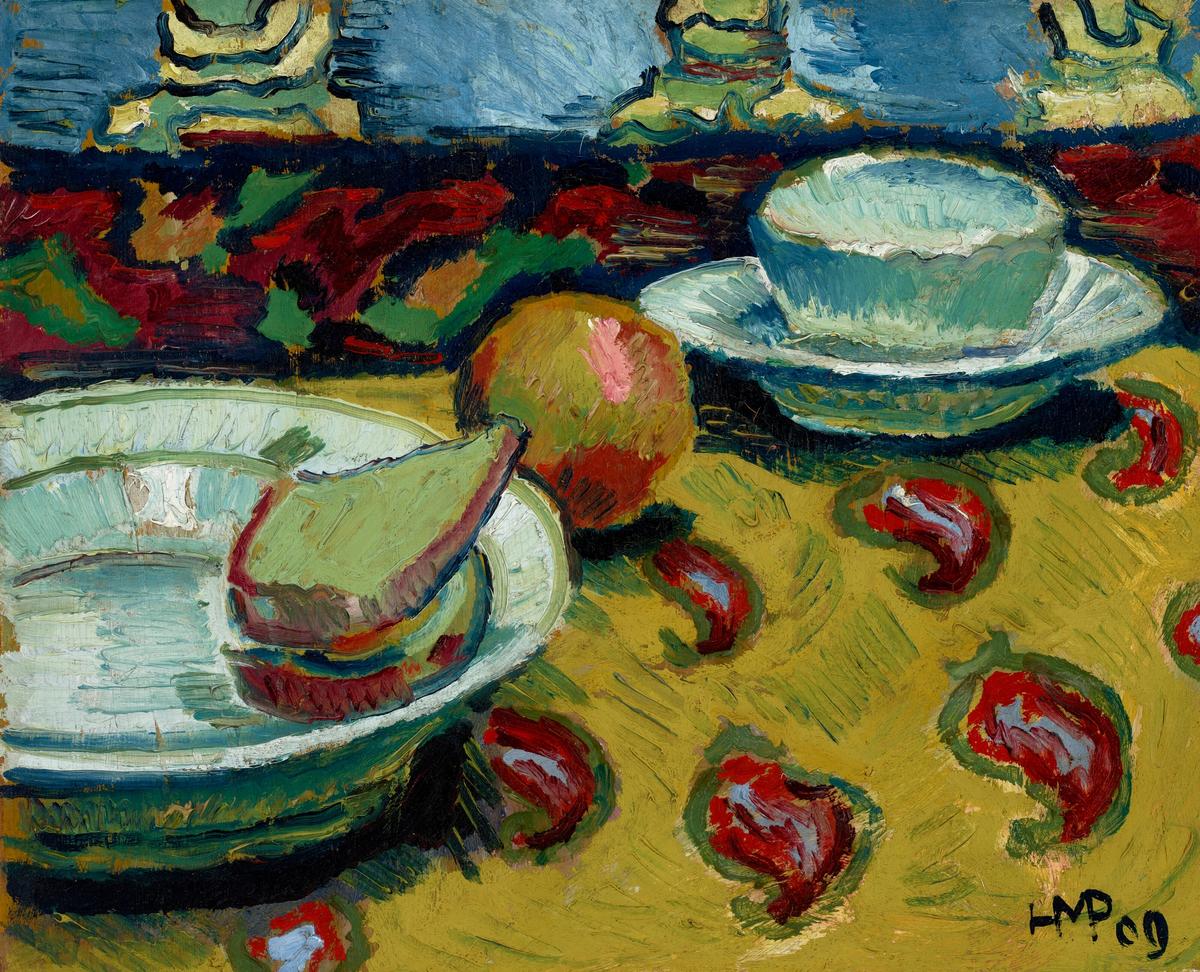When Hilda Graetz fled Nazi Germany for South Africa in late 1935, she took with her a painting by Max Pechstein that her father had given her. She got a job as a sales assistant and sold the painting—Still Life With a Cup (1909)—to the Johannesburg art dealer Kurt Silberberg after finding out her father had died in a concentration camp.
The still life resurfaced on the art market more than 60 years later, when Christie’s sold it at auction in London in 2004 for just over £250,000. At that point, its history as the property of a Jewish collector persecuted by the Nazis was not known. Christie’s is now offering it for sale again in New York on 11 November—this time, after mediating a settlement between Graetz’s heirs and the consignor.
“We sold it after extensive research” in 2004, says Dirk Boll, the deputy chairman of 20th and 21st century art at Christie’s in London. “We learned what was possible at that time, but provenance research is a developing field—something can turn up in an archive at any time.”
Hilda’s father, Robert Graetz, was a Jewish textile industrialist in Berlin who specialised in women’s coats and suits, and he built a collection of around 200 works by artists including Otto Dix, Emil Nolde, Karl Schmidt-Rottluff and Käthe Kollwitz. He remained in Berlin after his two children fled. His company, villa, and art collection were confiscated and he was deported to a concentration camp in 1942.
His heirs have recovered some paintings in recent years, including two by Schmidt-Rottluff that were returned by Berlin’s Neue Nationalgalerie in 2011. But a comprehensive reconstruction of the collection has only been possible since 2019, when the lawyers Ewald Volhard and Mara Wantuch-Thole received funding from the German Lost Art Foundation to research the missing works.
With the help of Pechstein’s granddaughter, who provided the artist’s own sales records, they were able to identify Still Life With a Cup as one of Graetz’s paintings and trace its journey to Silberberg, the South African dealer.
“After she found out from the Red Cross that her father had died, Hilda Graetz knew she was never going to go back to Germany,” Wantuch-Thole says. “She sold the paintings he had given her to support herself and start her new life.”
Boll points out that even if the painting’s history had been known in 2004, “flight assets” sold by Jewish people in safe third countries after they had fled Nazi Germany would not then have been considered a case for restitution or a financial settlement.
A turning-point came in 2021, he says, when Germany’s advisory panel on Nazi-looted art recommended the restitution of Franz Marc’s Foxes to the heirs of a Jewish banker who sold it to fund his escape to Chile. The panel ruled that the sale was “so closely connected with National Socialist persecution that the location of the event becomes secondary in comparison.”
Still Life With a Cup is expected to fetch between $200,000 and $300,000 at auction in November. The current owner, a Jewish American collector who did not wish to be identified by name, “was unaware of the Graetz family history” and “pleased to reach an agreement that allowed the sale to go forward,” says Nicholas O’Donnell, his attorney.
“Particularly in such cases, the challenge is balancing the strictly legal rights that often lag behind the evolving understanding of the historical circumstances,” O’Donnell says.
The painting is now on show at Christie’s in New York ahead of the auction.


